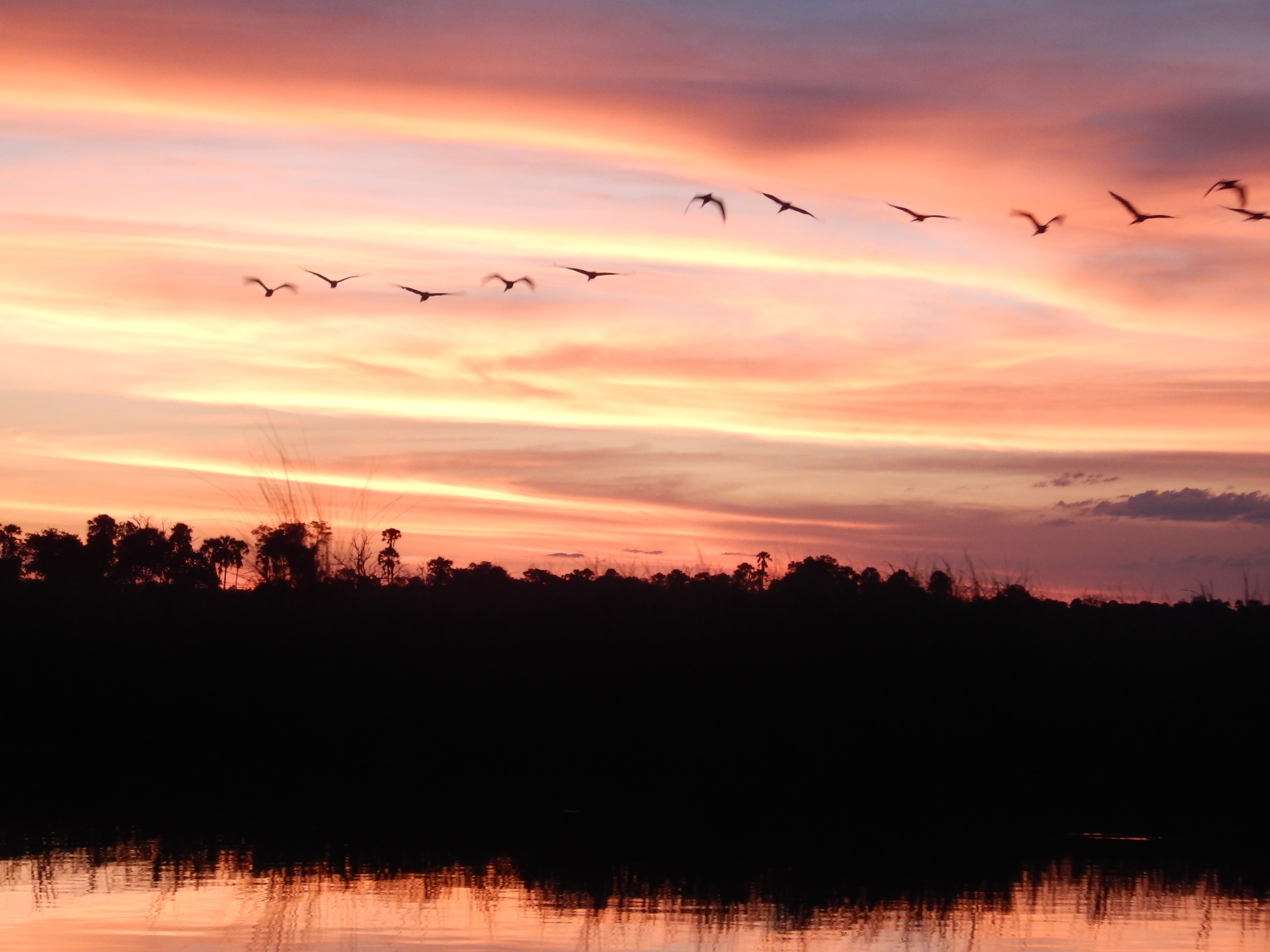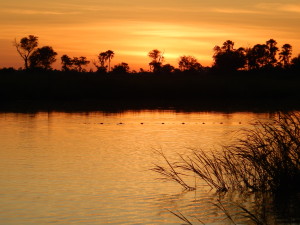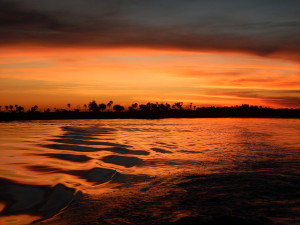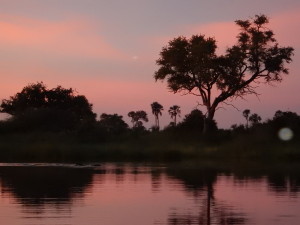Stuck in the middle…
The day began with discovery – a tick in the teapot. I resolved to add powdered cappuccino mix after pouring water in my cup from now on.
At sunrise – and it was a fantastic African sunrise grading from pink to blue between the horizon and the fading night sky – we headed out to check our nets.
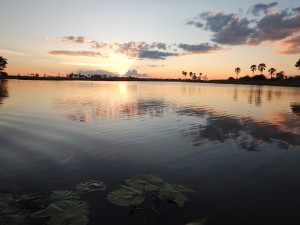
Things were pretty good. Between the overnight set and the morning set, we managed to catch 40 fish, and none of them were poached by crocodiles as far as we could tell. But only 7 tilapia. The rest were Clarias catfish, silver catfish, funny looking fish called bottlenoses, and a handful of toothy pike.
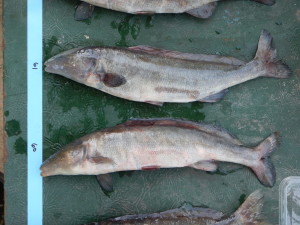
Although my project is on tilapia, I am also a graduate of the Guillette lab, so naturally I collected tissues from all 40 fish, regardless of species. I can picture the graph now. Heavy metals across the piscivorous trophic cascade. Sounds appropriately sciency. Anyway, my back hurts now from hunching over a dissecting tray all day and I notice I got sunburned despite sitting in the shade.
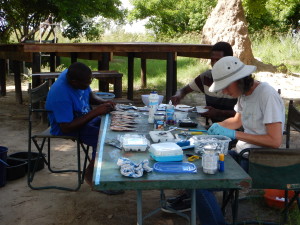
Regardless of my aching back and full trays of samples, my sample size is technically just 7, and that’s still mixed species – redbreast, greenhead, and three-spotted tilapia, males and females.
Nothing to write home about, although good enough for a blog.
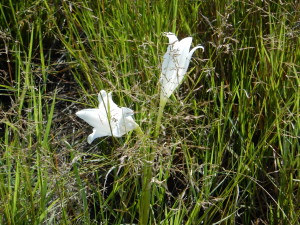
Over the past weeks of field work, I’ve made several “note to self” observations. Incidentally, that phrase, “note to self” comes from Dr. Ed Orlando at the University of Maryland. He taught me to dissect my first fish when I started down this fascinating path some unmentioned number of years ago.
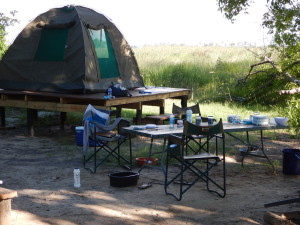
I’ve observed things like
- When it’s pitch dark, your headlamp is always at the bottom of your bag, tangled in your underwear.
- At some point, fish guck under your fingernails no longer grosses you out and you eat lunch with the same finger-licking gusto you would if your hands were clean.
- Flies add flavor to dinner.
- Mosquitoes are easily the most annoying, troublesome, potentially fatal-disease-inducing beasts of all time. Aggravation by mosquitoes is a unifying experience shared by all human kind.
- You can find where in the bush you threw those tilapia guts by looking for the ant feeding frenzy. And a useful corollary: Don’t drop tilapia guts by your feet.
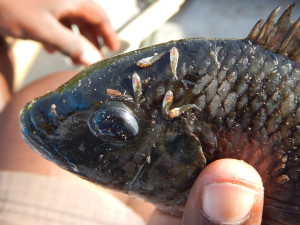
Just before sundown, which happens at 6:36 pm these days, we headed out to set nets again and check water quality. We ran into a couple of fishermen in a mokoro and hailed them to ask what they had caught. Suffice to say, they did better than us. And they had lots of tilapia – probably 11 or 12. So, we offered to buy their catch tomorrow if they can bring them in the morning, which allows us time to dissect in the daylight. And with this happy thought, we circled around, past the four hippos who had watched our conversation and headed home.
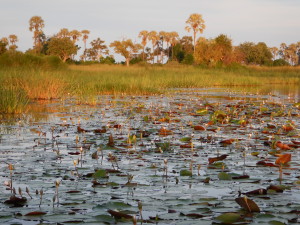
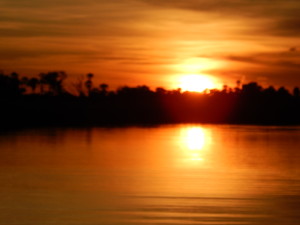
Well, that was our intention, but the engine chose that moment to stall and not restart. The hippos edged closer, blowing water from their noses, twitching their ears, and giving us the definite hippo version of a hairy eyeball. Our driver took the cover off the engine and fiddled with the parts in a way only possible with someone who knows about small engines and has tons of experience solving these kinds of problems. “Thank goodness”, I muttered silently to myself. I have tremendous confidence in the ORI staff and now even more so.
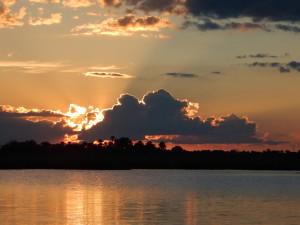
As the hippos surfaced, our engine started, and we were off, sending ripples across the water to melt with the sky. The sun set in splendid red and gold, silhouetting palm trees in fiery light. At markets in southern Africa, you can buy printed clothes with this image – red, orange, yellow, and blue washes of paint overlaid with dark silhouettes of trees. In this moment on the boat, I suddenly realized that motif is not made up. It copies real sunsets. The number of pictures I took made me grateful for digital cameras. Nowhere in the world are sunsets so dramatic and so beautiful as here in the Okavango Delta.

Having ogled the sunset and filled my memory card, I turned in time to see the harvest moon rising. And in the light of the moon, right by our dock was another hippo, preparing to launch himself over the water, which he did just moments later as we approached. Then, the hippo proceeded to lunge in wide arcs, spraying water, humphing and grunting.
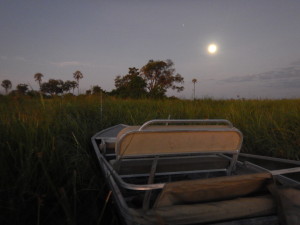
As the least experienced person on the boat, I was apt to interpret these hippo gestures as “go away” signals. But not so, according to our driver, who I think decided to give me the thrill of getting close to a cavorting hippo. A good photo opportunity perhaps. Yee gads. I’ve seen the viral video of the hippo lunging at the boat. My colleagues have regaled me with stories of hippo attacks. If only half those stories are real, I am fully persuaded that hippos are not to be antagonized.
I would show a photo here except that I was too busy trying to get out of the boat.
To my great relief, the hippo pushed off. Having done his best to discourage our landing, he splashed off to lurk in the shrubbery by my tent, where I expect he will humph and grunt until morning, as he did last night.
Sitting by the campfire now, enjoying a nice tilapia dinner, I can hear him in the river. Hippos make a wonderful sound. They make a low, almost gutteral “huh huh huh” sound, like Tolkien’s Treebeard might make if he was laughing.
And complementing the hippos are the lions on the other side of the trees, maybe a km away, maybe closer. I am no expert, but I can hear them clearly. They also make a low guttural sound, but it’s a single syllable and gives the impression of a meaningful sigh. I’m told this is the language of negotiation among lions as they guard and defend territories.
My colleagues were out driving this morning and came across a pride of five lions and separately a lone male. I hope to see them before we leave, through preferably from a car window rather than a tent window, and preferably in the daylight, not in the dark, as I walk the lonely path through tall grass back to my tent. I don’t think lions are much interested in eating people because if they were, we’d all be eaten by now. But in this rare case, I am not up for experimenting.
